Operating experience and additional order: RTK of the Uranus series in Special Operations
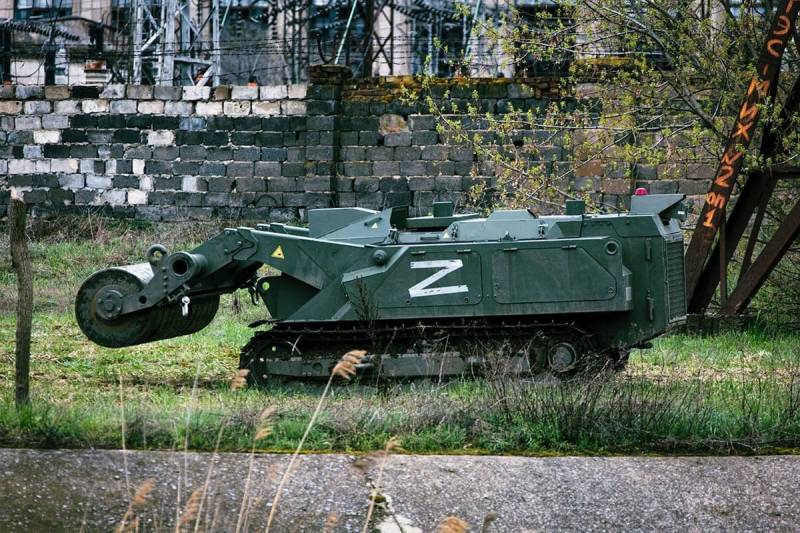
"Uran-6" in Lugansk, April 2022. Photo by the Ministry of Defense of the Russian Federation
In the liberated territories, the engineering troops of the Russian army are actively using robotic systems of the Uran family. With their help, minefields are cleared and other activities are carried out. Positive operating experience has been accumulated, and the Ministry of Defense has decided to increase the pace of purchases and deliveries of such equipment to engineering units. An increase in the number of RTKs in the troops will lead to understandable positive results.
Deliveries continue
RTKs of the Uranus family have been mass-produced and supplied to the troops since the middle of the last decade, and the army regularly receives new products. So, in January of this year, on the eve of the Day of Engineering Troops, the Ministry of Defense reported that in 2022 the industry had delivered more than 20 Uran-6 demining systems and robots fire extinguishing "Uranus-14". New deliveries were expected.
During the recent Army-2023 military-technical forum, the Ministry of Defense issued another order for the production of the Uran-6 RTK. The contract, as before, was awarded to the Special Design Bureau of the Ministry of Defense (the former 766th production and technological equipment department). At the same time, the number of ordered complexes and their cost have not yet been disclosed.
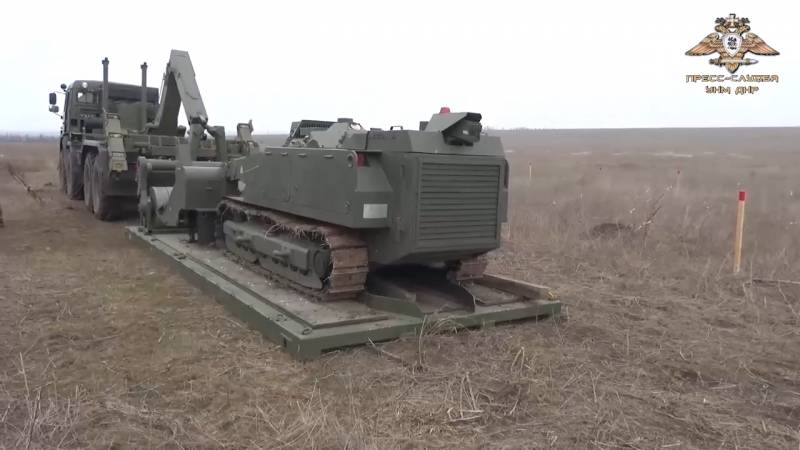
Unloading the robot before work, April 2022. Photo by UNM DPR
On August 25, the Izvestia publication, citing its sources, reported that the Ministry of Defense had decided to adjust its plans for the production and purchase of Uraniums. This decision is based on the positive experience of using RTK in the Special Operation zone and in the liberated territories, as well as the need to equip newly created units and subunits.
According to Izvestia, the Ministry of Defense is going to increase the supply of Uran-6 sapper robots and Uran-14 fire extinguishing systems to the troops. A similar decision regarding the combat RTK "Uran-9" has not yet been made. Now the department is refining plans and determining the required number of engineering robots. How soon these works will be completed and the production of the required RTKs will begin with deployment in parts has not yet been specified.
It is reported that such equipment will be supplied to the supply of engineering units in the formations of the newly formed military districts. Izvestia reminds that each of the military districts has an engineering brigade, and combined arms and tank armies have their own engineer regiments. Apparently, it is these formations and units that will receive the new Uranus.
Positive experience
By now, the Russian engineering troops have managed to accumulate extensive experience in the operation and use of robotic systems of the Uranus line. Demining RTKs were used in the North Caucasus to search for and destroy dangerous objects on agricultural land, and were also widely used in Syria. Uran-14 fire robots were also repeatedly involved in various rescue activities.
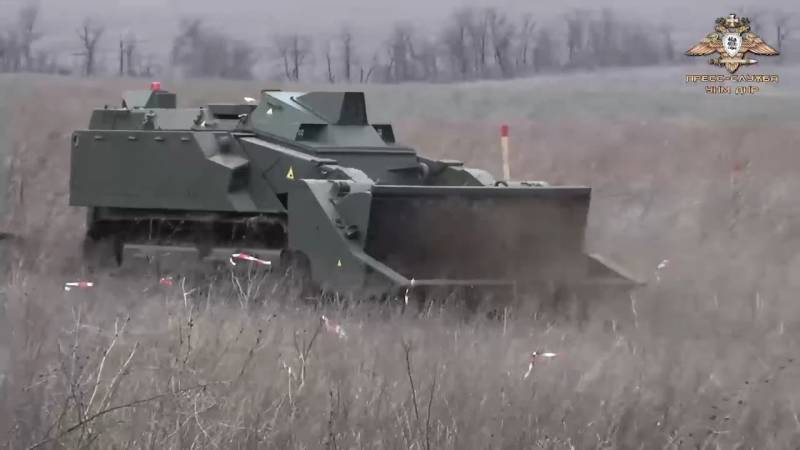
Uran-6 at work, April 2022. Photo by UNM DPR
Shortly after the start of the Special Operation for the Defense of Donbass, Russian engineering units equipped with Urans arrived in the liberated territories. Their task was the humanitarian demining of the area and the elimination of the consequences of the enemy's influence. In early April, the Ministry of Defense for the first time showed the work of our sappers on the territory of the republics of Donbass.
In the future, videos were repeatedly published showing the work of the Uran-6 RTK and their operators. Robots neutralized explosive devices in different regions of the LPR and DPR and cleared large areas. Such work is still ongoing. A significant part of the dangerous areas have already been surveyed and neutralized, but the engineers still have a lot of work to do. In addition, the enemy is bombarding new Russian regions with various types of ammunition, and then the intervention of sappers is required.
In the course of combat work, the Uran-6 systems encounter mines and dangerous objects of various classes and types. The enemy mined the area using anti-personnel and anti-tank ammunition, ranging from PFM-1 to the heaviest items in his arsenal. In addition, there is a problem in the form of unexploded ordnance and cluster munition submunitions. The Uran-6 RTK with standard anti-mine equipment copes with a significant part of such threats. In other cases, people have to work on their own.
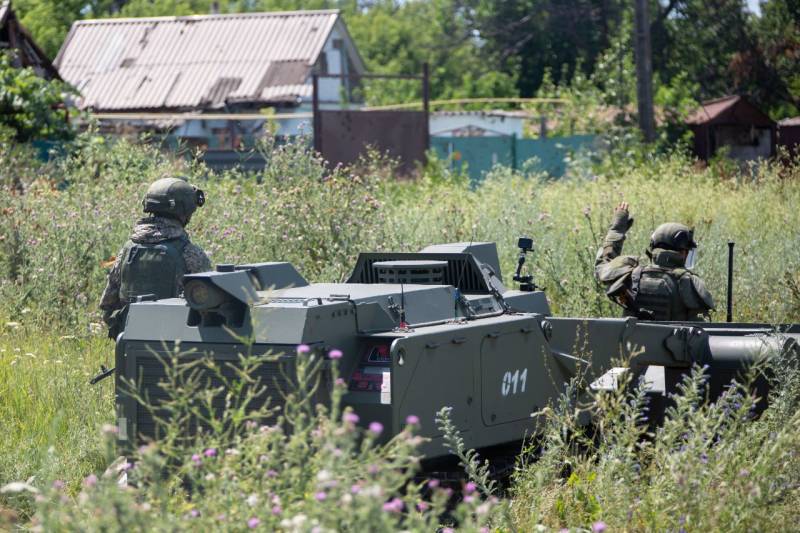
Engineers in Mariupol, June 2022. Photo by the RF Ministry of Defense
The army also has a Uran-14 fire extinguishing system. However, the participation of such equipment in the Special Operation has not yet been reported. At the same time, it could find application in the combat zone and in the surrounding regions. Enemy shelling regularly results in fires and fires. In some of these situations, a fire robot with special abilities could come in handy. It is likely that the current plans to increase the number of such equipment are connected precisely with the need to ensure the security of new regions.
Technical features
The Uranus series currently includes three RTKs for various purposes. They are built on a unified platform and share a number of common systems, including controls. At the same time, each complex has its own characteristics and carries equipment corresponding to its tasks. This approach to design has greatly simplified the production and operation of equipment, incl. joint.
All "Uranus" received armored hulls that protect against bullets, shrapnel and shock waves. The robots are equipped with a 240 hp diesel engine. or 400 hp (combat "Uranus-9"). The caterpillar chassis provides high cross-country ability on different soils and terrains. At the same time, engineering machines do not require high speed during operation.
Robots are controlled remotely from the operator's console. On board the machines there are cameras for all-round visibility and various sensors that transmit a signal to the operator; commands come back. "Uran-6" and "Uran-14" are controlled at a distance of up to 800-1000 m. The combat "Uran-9" received a more advanced radio system with a range of 4 km.
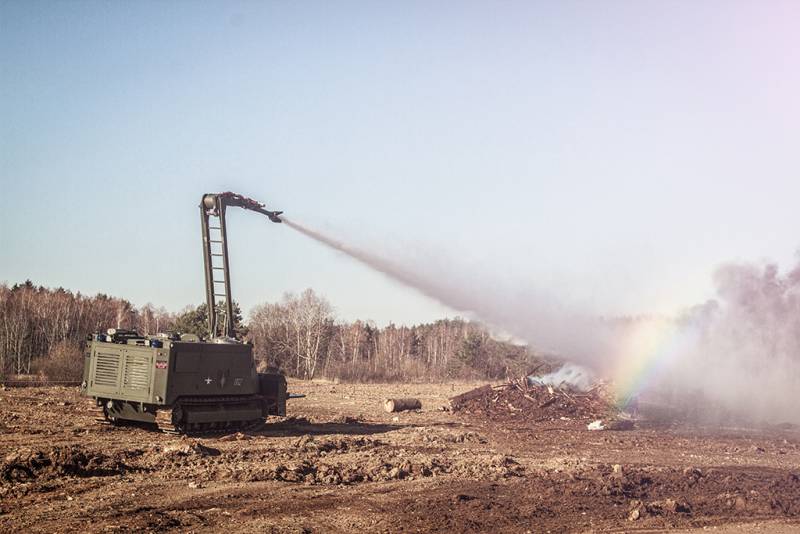
Uran-14 is extinguishing the fire. Photo SKB MO
RTK demining "Uranus-6" has a pair of manipulators for the installation of minesweeper or working equipment. The complex includes a striking, milling and roller trawl, as well as a bulldozer blade and a mechanical tong. Regular trawls allow you to clear a continuous strip 1,7 m wide. With the help of other equipment, earthworks are carried out, blockages are cleared, etc.
The fire-fighting "Uranus-14" is distinguished by an enlarged body and other equipment. Under the armor are tanks for water (2000 l) and foam concentrate (600 l); it is possible to work with an external water source. Also, the robot is equipped with an arrow with a fire barrel-monitor for direct fire extinguishing. The onboard pump gives a jet range of 50 m. In the bow there is a tong for handling dangerous goods. A water cooling system is provided during operation.
Opportunity Growth
During tests and actual operation, the engineer and fire robots showed their ability to solve various problems and confirmed the calculated characteristics. Since the spring of last year, this technique has been actively participating in the Special Operation and helping Donbass to return to normal life. It is reported that large areas have been cleared, which can now again be used for one purpose or another.
The Ministry of Defense sees all the benefits of "Uranium" and draws the appropriate conclusions. Thanks to this, another contract for production was signed at Army-2023, and now an increase in purchases and deliveries is planned. The appearance in units and formations of an additional number of demining and firefighting RTKs will make it possible to maintain and improve the capabilities of the engineering troops, taking into account the current situation and the expected future.
Information